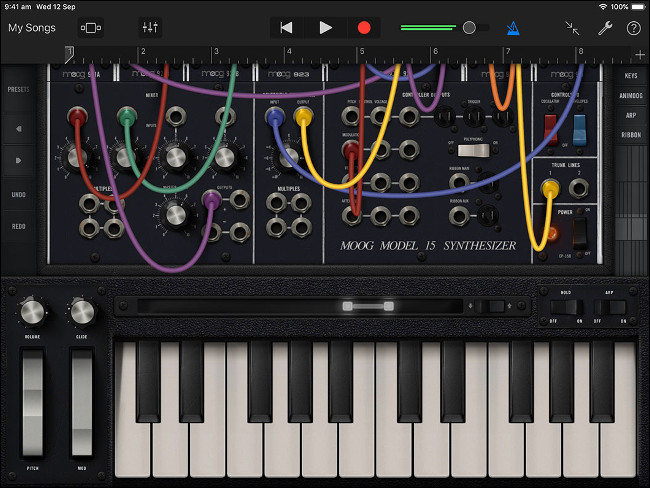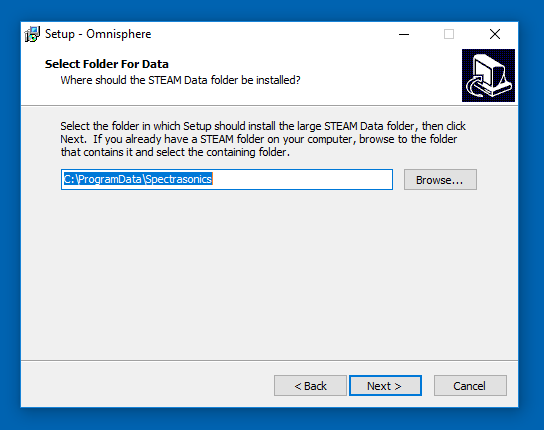Recording Guitar Into Ipad Garageband
More then ever, it has become easier to lay down your song ideas while on the move. With GarageBand for iPad, we are also closer then ever to having a full professional recording studio in a very thin package. And at a price of $4.99, who can complain? For those who are just starting out, here's a first tutorial on recording guitar to get you and your iPad rocking.
Read more: iPad Pro 11 review. Connect your guitar to your iOS device (we’re using an iRig), get your headphones on and turn up the volume on your headphones and guitar. Open GarageBand. It’ll detect your guitar and automatically open the Guitar Amp.
- I have been able to output audio from my iPad and record it into GarageBand on my MacBook Pro. I can then edit the audio in GarageBand on the MacBook. I have been unable, however, to go the other way, that is I have been unable to send audio out of may MacBook and record it in iOS GarageBand on the iPad.
- So You Want To Record Authentic-Sounding Guitar In Your DAW. In this article, I’ll show you exactly how to plug your guitar into GarageBand. The way that I find works best is the most convenient and sounds pretty good as well while minimizing latency and other problems.
- Recording on your iPad through Apogee equipment is as painless as plugging a single cord into your iOS device. Through your direct digital connection and external power source, ONE, Duet, and Quartet are able to charge your iPad while you record.
- May 23, 2018 50+ videos Play all Mix - 3 Ways to Connect Your Guitar To GarageBand (Mac) YouTube How to connect an electric guitar to an iPhone or iPad - Duration: 9:12. Pete Johns 82,276 views.
- How To Tune Your Guitar Using GarageBand. 1) Your guitar is plugged into your audio interface in the computer, so it’s as simple as clicking on the tuning fork beside the center of the DAW where it shows the time signature, tempo, and key signature.
Setup and Equipment needed
First off before even starting the application, you should get the hardware you need to enable you to record your guitar to your iPad. There are two basic input types you need to consider:
- Guitar Input for Electric Guitar and Bass (IK Multimedia iRig, Apogee Jam, AmpKit Link)
- Mic Input for acoustic guitar (IK Multimedia iRig Mic, Blue Yeti Pro -- requires Apple's Camera Connection Kit)
L to R: IK Multimedia's iRig, Blue Yeti Mic, Apple's Camera Connection Kit
Guitar Amp
Launch GarageBand for iPad and plug your guitar into the iRig. On the left of the screen is a ' 1/4' jack' button which lets you add a noise gate. Handy for those distorted tones. Next to it is the guitarist's best friend: the Tuner.. no excuses for a flat g-string!
In the middle, you can select from different amp combinations and even save settings of your own. You can also swipe the amps to keep the same preset settings and try these settings on different amps.
On the far right is the 'pedals' section. Here you can add up to 4 pedals, change their effects level and remove pedals. To get back to the amp section, tap the 'Amp' icon on the right of the screen. One nice thing about GB for iPad is that you can change the amps settings after you've recorded your part and even create your own presets for future recordings.

Recording Acoustic Guitar On Garageband Ipad
Audio Recorder
If you want to record acoustic guitar, you can use the iPad's built in microphone but I would recommend looking at Blue Microphone's 'Yeti Pro' or Apogee's upcoming 'Mic' to add a professional sheen to your recordings. When you first open Audio Recorder it gives you a VU meter to check your audio input levels. A noise gate is also available by tapping on the '1/4' plug' icon.
Once you record a take, you can then add processing to the sound from a preset selection that include effects and voice transformers. The effects also give you sliders for compression, reverb, chorus, etc. depending on the effect you choose.
Recording Tips!
Recording Guitar Into Ipad Garageband 2
First and foremost.. PRACTICE! GB on the iPad does not allow editing like GB on a Mac and you don't get features like Flex Time, multiple takes, pitch correction, etc. Also, you will have to play the parts at the tempo of the song unlike those who slow a song down, record their part, and speed it up after. While some would look at this as a detriment, I look at it as positive growth for musical skills and it ultimately gives you a better understanding of your song. After all, becoming a better musician is a life long process and not a means to an end.
After recording an electric guitar you have plenty of options to affect the tone as the amps have EQ and FX pedals to compress, etc. If you want to record feedback on the electric guitar, you will need to connect the output to your speakers and boost the main volume. But.. be careful as each amp/guitar has it's own characteristics for feedback and some are just plain uncontrollable ear-piercing squeals. Layering guitars also has the usual big sound but also eats up tracks so planning is crucial.
Also, when planning your song parts, take into account that GB for iPad does things in 'sections' and only up to 10 sections. While this may not seem like a big deal, you will want to figure out the parts/sections of your song beforehand. For example, song intro, verse 1, pre-chorus, verse 2 with added guitar, pre-chorus with organ, Chorus, verse 3 with less instruments, bridge, intro, Chorus, Chorus 2, End, etc. You can put the 'Sections' into 'Automatic' mode which gives you whatever amount of bars you want i.e. Record intro and verse 1 together.

When recording an acoustic guitar or instrument, be sure to try different takes with your USB microphone or iPad mic on different spots and distances from the guitar. Mic placement is very critical to get a decent sound. For example, placing a mic close to the sound hole of the guitar can add unwanted bass frequencies. Although with the iPad mic I found this to be the best spot.
Also, there are No EQ Frequency bands to allow you to fix things after recording. For a brighter tone, consider newer strings or a harder pick. If using the iPad's mic, make sure your room is as quiet as possible, because it'll pick up every little sound as the signal to noise ratio is not great. Another trick is to use the Guitar Amp settings for EQ control. I found the most natural to be the Clean Combo setting with the gain off. As you increase the gain, it adds some crunch to the tone. This way you can EQ somewhat and even add some nice compression and chorus. Even playing with the Noise Gate setting gave some interesting results. Metal Acoustic! Experimentation is key.
Stay tuned for more GarageBand for iPad tips and tutorials on recording synths, pianos, etc. and vocals!
You can connect real instruments, such as electric keyboards and guitars to your Mac for use in GarageBand. Using real instruments with GarageBand produces not only better sound, but realistic practice, as you finger the actual instrument and not an on-screen keyboard/string set.
You can connect a real MIDI keyboard through a USB cable (on most newer gear) or a MIDI adapter (on older equipment). You can connect other MIDI instruments, including guitars, woodwinds, and drums, and record onto a real instrument track in GarageBand. Click the red Record button when you’re ready to rock. Move the playhead to just before where you want to start jamming.
MIDI is geek shorthand for Musical Instrument Digital Interface, a standard that has been around for years.
If the high-quality instrument you have in mind is your own singing voice, connect a microphone (in lieu of the Mac’s built-in microphone) to an audio input port on the computer.
Open System Preferences, click Sound, click Input, and then select Line In. Drag the Input volume slider to an appropriate level. Choose Vocals and the instrument that most closely matches your singing style, such as Epic Diva, Helium Breath, or Megaphone. Garage Band will tailor the effects to your voice.
Don’t worry if you don’t know how to characterize your singing voice; one of your other options is No Effects.
Good microphones are also useful when you’re recording podcasts. If you choose to use a microphone not for singing but for recording your speaking voice, set the option to No Effects (unless you’re going for a comedic effect).
To add the instrument to a recording, click the Create a New Track (+) button, choose Track→New Track, then select Real Instrument and click Create.
Choose an input source (stereo or mono), depending on how the instrument is connected to the Mac. Steam folder is not writable omnisphere 2 mac. Select Monitor from the pop-up menu to be able to hear the instrument as you play it, with or without feedback.
